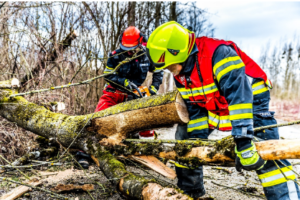Proper tree care adds value and appeal to property but can be challenging; professional arborist services should be utilised.
Hiring an arborist servicing Adelaide Hills is an expensive investment, so it is wise to select an experienced and knowledgeable individual. This article will help you to identify what qualifies an arborist as qualified.
 Job Duties
Job Duties
An arborist’s duties involve trimming and removing dead limbs, pruning trees and shrubs, maintaining plant health and appearance, and treating tree diseases as needed. Some arborists specialise in treating specific tree diseases, while others focus on beautifying decorative species by shaping ornamental trees and shrubs into shapes suitable for ornamentation. Arborists utilise various power tools and equipment, such as ladders, chainsaws, loppers and shears; often, climbing tall trees may be required with appropriate safety precautions to easily access them.
Arborists play an invaluable role in planting new trees. Before beginning this task, arborists must inspect their desired area to ensure there are no underground pipes or cables that might hinder its growth, then dig a hole of appropriate size so the tree will thrive in its environment.
Education and Training Requirements
Arborist servicing Adelaide Hills has in-depth knowledge of tree biology, identification, and maintenance. In addition to being adept with climbing ropes and harnesses for tree work, arborists need the physical ability to climb trees when required to remove infected limbs or trim entire trees. Furthermore, arborists should understand climates and soil types to know which trees thrive best within each region or condition.
Some arborists may require a license or certification before employment based on their state of operation. Others can become certified by attending an arboriculture training program and passing an exam; either way, professional arborists should maintain their professional status by participating in educational courses and adhering to a code of ethics.
Because arborist work can be hazardous, they must acquire safety measures and risk-free working strategies. Arborists may encounter hazards like power tools, equipment, pesticides and fertilisers which could cause injuries. Furthermore, when working in wilderness areas, they should be wary of poisonous plants, wildlife and other risks which could put their health at risk. Furthermore, arborists must know how best to use protective gear safely when climbing near powerlines, be comfortable working outdoors during all kinds of weather, and have enough stamina to climb various tree sizes.
Work Environment
Arborists work outdoors and are exposed to numerous hazards, including extreme temperatures, windy conditions, rain and snow. They may use ladders or other climbing equipment when working off-ground in tree canopies – this requires specialised climbing and rigging skills – while nearing power lines as they operate tools such as saws, trucks, loaders, chippers or tractors.
Arborists servicing Adelaide Hills play an essential role in maintaining adequate soil conditions and adhering to safety procedures when performing their work, which may involve testing the acidity and nutrient levels of the soil. Furthermore, city planners and engineers often seek their expertise when planning urban development plans incorporating trees.
As an arborist, candidates must possess exceptional customer service skills to provide helpful advice and respond promptly to client inquiries. They should also know about various tree care techniques and equipment used in tree maintenance, such as pruning, planting, mulching, fertilising, and spraying disease control solutions. Finally, an arborist must collaborate in team environments and possess the physical fitness to perform strenuous activities and climb trees safely – not forgetting to keep accurate records!
Safety
Arborists work in a dangerous environment that exposes them to falling tree limbs, power lines, pest infestations and dead branches that pose potential safety threats. Therefore, they must strictly abide by safety guidelines when performing their duties, such as pruning, trimming, or felling trees. Before undertaking a job – whether pruning, trimming, or felling trees – arborists must ensure all equipment (chainsaws, climbing ropes, ladders, rigging systems etc.) is in working condition before beginning each task; pre-work assessments must include this. In case of malfunctions should occur after every job completion rather than placing someone or their coworkers at risk.
An arborist must always wear the appropriate personal protective equipment (PPE). While a hard hat may suffice for someone working on the ground, an arborist working at heights should use additional safety gear such as harnesses or aerial lifts to stay safe when working from heights.
